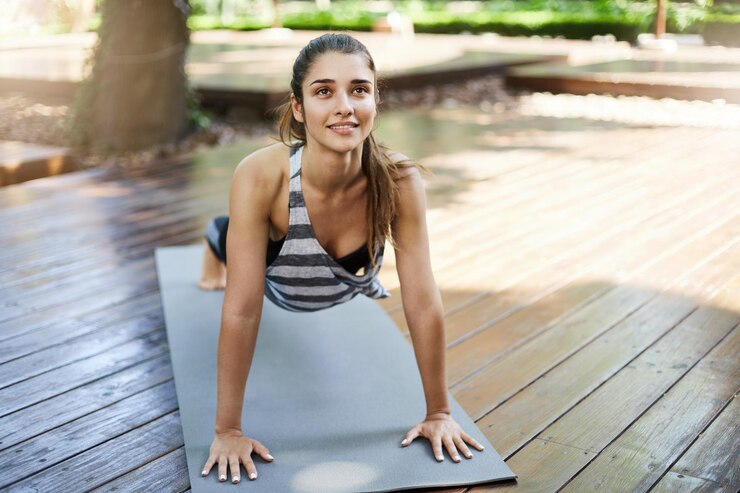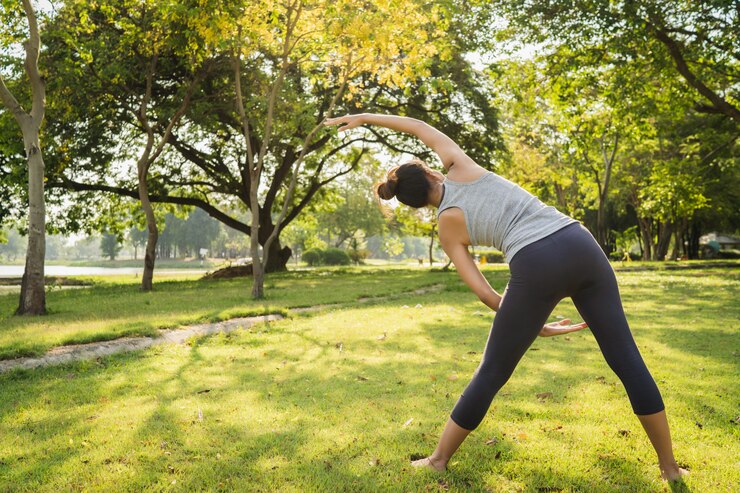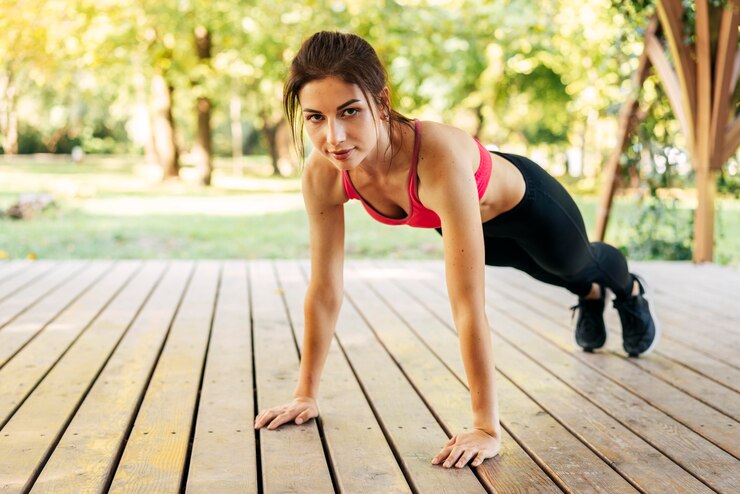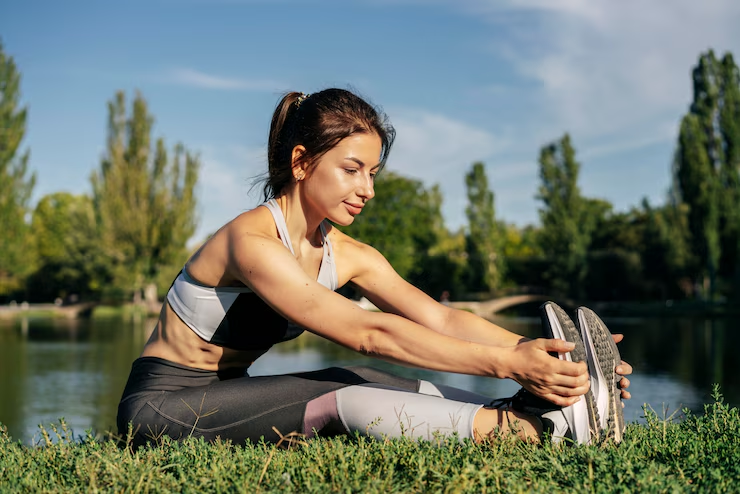Regular physical activity is essential for maintaining a healthy lifestyle. It contributes to overall well-being, reduces the risk of chronic diseases, enhances mental health, and improves the quality of life. Despite the well-documented benefits, many people struggle to incorporate regular exercise into their daily routines. This article will delve into the myriad benefits of physical activity, the recommended types and amounts of exercise, and practical tips for integrating physical activity into a busy lifestyle. Balanced Diet also improves your energy to keep you more active.
Benefits of Regular Physical Activity
Physical Health Benefits
- Weight Management
Regular physical activity helps control weight by burning calories. When combined with a balanced diet, exercise is a powerful tool for achieving and maintaining a healthy weight. Even modest increases in physical activity can prevent unhealthy weight gain or help with weight loss.
- Cardiovascular Health
Exercise strengthens the heart and improves circulation, reducing the risk of heart disease and stroke. It helps lower blood pressure, improve cholesterol levels, and maintain healthy blood vessels. Aerobic exercises like walking, running, cycling, and swimming are particularly beneficial for cardiovascular health.
- Muscle and Bone Strength
Weight-bearing and resistance exercises, such as lifting weights, yoga, and even walking, help build and maintain strong muscles and bones. This is crucial for preventing osteoporosis and reducing the risk of fractures as you age.
- Improved Metabolic Health
Regular exercise helps regulate blood sugar levels and improves insulin sensitivity, reducing the risk of type 2 diabetes. It also aids in maintaining healthy lipid profiles, decreasing the likelihood of developing metabolic syndrome.
- Enhanced Immune Function
Moderate physical activity can boost the immune system, making the body more efficient at fighting off infections. Regular exercise promotes better circulation, allowing immune cells to move more freely throughout the body.
- Longevity
Numerous studies have shown that regular physical activity is associated with increased life expectancy. People who engage in regular exercise tend to live longer, healthier lives, with a lower risk of premature death from various causes.

Mental Health Benefits
- Reduced Stress and Anxiety
Physical activity triggers the release of endorphins, which are natural mood lifters. Exercise also lowers levels of the body’s stress hormones, such as adrenaline and cortisol. This can lead to reduced stress and anxiety levels, promoting a sense of calm and well-being.
- Improved Mood
Regular exercise can alleviate symptoms of depression. Physical activity stimulates the production of endorphins and other chemicals in the brain that help improve mood and promote relaxation. It can also serve as a healthy coping mechanism for dealing with negative emotions.
- Better Sleep
Engaging in regular physical activity can help you fall asleep faster and enjoy deeper sleep. However, exercising too close to bedtime can have the opposite effect for some people, so it’s important to find the right timing for your workouts.
- Enhanced Cognitive Function
Exercise has been shown to improve brain function, including memory, attention, and processing speed. It stimulates the growth of new brain cells and helps prevent age-related cognitive decline. Physical activity can also enhance creativity and problem-solving skills.
- Increased Self-Esteem
Regular physical activity can boost self-esteem and self-confidence. Achieving fitness goals, no matter how small, can provide a sense of accomplishment and enhance your body image.

Recommended Types and Amounts of Physical Activity
Aerobic Exercise
Aerobic exercises are activities that increase your heart rate and breathing while using large muscle groups repetitively. Examples include walking, running, swimming, cycling, and dancing. The American Heart Association recommends at least 150 minutes of moderate-intensity aerobic exercise or 75 minutes of vigorous-intensity aerobic exercise per week. This can be broken down into sessions of at least 10 minutes each.
Strength Training
Strength training involves exercises that improve muscle strength and endurance. This includes activities like lifting weights, using resistance bands, and body-weight exercises like push-ups and squats. The recommendation is to engage in strength training exercises for all major muscle groups at least two days per week.
Flexibility and Balance Exercises
Flexibility exercises, such as stretching and yoga, help improve the range of motion in your joints. Balance exercises, such as tai chi and standing on one leg, can help prevent falls, especially in older adults. Incorporating these types of exercises into your routine can enhance overall physical function and reduce the risk of injury.

Practical Tips for Incorporating Physical Activity into Your Lifestyle
- Set Realistic Goals
Start with small, achievable goals and gradually increase the intensity and duration of your workouts. This can help prevent burnout and injury, making it more likely that you’ll stick with your exercise routine.
- Find Activities You Enjoy
Choose activities that you find fun and enjoyable. Whether it’s dancing, hiking, playing a sport, or gardening, enjoying the activity increases the likelihood of making it a regular part of your life.
- Make it a Habit
Schedule your workouts just like any other important activity. Consistency is key to developing a long-term exercise habit. Find a time of day that works best for you and stick to it.
- Incorporate Physical Activity into Daily Routine
Look for opportunities to be active throughout the day. Take the stairs instead of the elevator, walk or bike to work, do household chores, or take short walking breaks during your workday. Every bit of activity counts and contributes to your overall health.
- Use Technology
There are numerous apps and devices available that can help you track your physical activity, set goals, and stay motivated. Fitness trackers, smartwatches, and mobile apps can provide reminders, track progress, and even offer virtual coaching.
- Exercise with Others
Working out with a friend, family member, or group can provide motivation and accountability. It can also make exercising more enjoyable and add a social element to your routine.
- Listen to Your Body
It’s important to pay attention to how your body feels during and after exercise. Rest when needed, and don’t push yourself too hard, especially if you’re just starting out. Gradual progress is safer and more sustainable than trying to do too much too soon.
- Mix It Up
Variety in your exercise routine can help prevent boredom and keep you motivated. Try different types of workouts, join a new fitness class, or explore different outdoor activities. Mixing up your routine can also help work different muscle groups and prevent overuse injuries.
- Reward Yourself
Celebrate your achievements and milestones. Treat yourself to something special when you reach a fitness goal, whether it’s a new workout outfit, a relaxing massage, or a fun day out. Rewards can provide extra motivation to stay on track.
- Seek Professional Guidance
If you’re unsure where to start or how to progress, consider seeking guidance from a fitness professional. Personal trainers, physical therapists, and other fitness experts can provide personalized advice, design a tailored exercise program, and ensure you’re performing exercises correctly and safely.

Overcoming Barriers to Regular Physical Activity
- Lack of Time
A common barrier to regular physical activity is a perceived lack of time. However, it’s possible to find small pockets of time throughout the day for exercise. High-intensity interval training (HIIT) can be particularly effective for people with busy schedules, as it provides a rigorous workout in a shorter amount of time.
- Lack of Motivation
Staying motivated can be challenging, especially if you don’t see immediate results. Setting short-term goals, tracking progress, and finding a workout buddy can help maintain motivation. Remember that the benefits of regular physical activity go beyond physical appearance and include improved mental health and overall well-being.
- Physical Limitations
Individuals with physical limitations or chronic conditions should consult a healthcare provider before starting an exercise program. Many types of physical activity can be adapted to meet individual needs and abilities. For example, chair exercises, water aerobics, and gentle yoga can be suitable options for those with mobility issues.
- Financial Constraints
Exercise doesn’t have to be expensive. Many physical activities, such as walking, running, or doing body-weight exercises, require little to no equipment. Community centers, parks, and online resources often offer free or low-cost fitness classes and programs.
- Weather and Environment
Weather and environmental factors can sometimes hinder outdoor physical activity. In such cases, consider indoor alternatives like joining a gym, participating in indoor sports, or using home workout videos. Virtual fitness classes and online workout programs can also provide convenient options for staying active indoors.
Conclusion
Regular physical activity is a vital component of a healthy lifestyle, offering numerous benefits for both physical and mental health. By understanding the importance of exercise and finding ways to incorporate it into your daily routine, you can improve your overall well-being and enhance your quality of life. Whether it’s through structured workouts, recreational activities, or simply being more active throughout the day, making physical activity a priority is an investment in your long-term health. Start small, stay consistent, and enjoy the journey to a more active, healthier you.










No Comment! Be the first one.